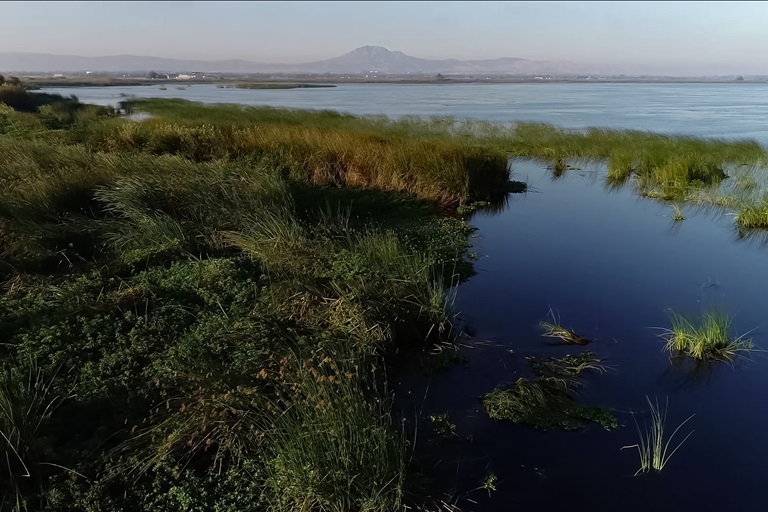Dutch Slough Project Creates Richer Habitat for Delta Fish and Wildlife
Marsh vegetation along Dutch Slough. DWR/2018
Editor’s note: The following article is part of a continuing series highlighting the California EcoRestore Initiative, which seeks to restore 30,000 acres of habitat in the Sacramento-San Joaquin Delta by 2020. California EcoRestore is an umbrella program that includes habitat restoration efforts implemented and funded by departments under the California Natural Resources Agency including Department of Water Resources, Department of Fish and Wildlife, and Delta Conservancy.
The Department of Water Resources (DWR) recently broke ground on the Dutch Slough Tidal Restoration Project, the largest tidal wetlands restoration project in the Sacramento-San Joaquin Delta to date. Located on the Delta’s western edge in Contra Costa County, the Dutch Slough project will transform approximately 1,200 acres of former grazing and dairy lands into a rich habitat for fish and wildlife.
Once completed, the project will utilize natural daily tides to allow water to flow in and out, creating a natural tidal wetland that provides a safer environment for salmon, splittail and other endangered fish species.
Historically, the Dutch Slough site was tidal marsh open to the rest of the Delta’s waterways. These wetlands helped support the base of the food chain.
Starting in the early 20th century, the creation of levees blocked off thousands of acres of wetlands from the Delta’s main channels, which diminished food production for fish and wildlife.
“It basically shut the grocery stores for most of the animals, there just wasn’t that much for them to eat anymore,” said Patty Finfrock, DWR Dutch Slough project manager.
Opening up the site to create the tidal wetland helps increase the density of the base of the food chain (such as clams, insects, and single-celled organisms) that support the fish in the main channels of the Delta.
Additionally, baby salmon migrating through the tidal wetlands to the ocean will now have a place to hide from predators and have greater access to food, which will help them grow stronger.
“Hopefully, the baby salmon will see this as a really great neighborhood to grow up in, because it is going to provide the things that they need – enough food to eat, and a safe place to live,” Finfrock said.
The site provides flood protection to surrounding neighborhoods, acting as a buffer against rising sea levels triggered by climate change. The project also includes a 55-acre regional park that will allow visitors to hike, bike, boat, fish, and birdwatch. The project also protects a historical vineyard, a local cultural heritage site that the public will be able to admire as part of the planned regional park.
“We don’t have to just restore habitat and set it aside for nature; we can do it in a way that provides lots of benefits to humans,” said John Cain, Director of Conservation for California Flood Management with American Rivers, a longtime advocate for this effort.
This project was designed to help scientists learn about restoration in the Delta. It will serve as a living laboratory where scientists can advance their understanding about the benefits of tidal habitat at a range of elevations. This knowledge will help inform future restoration projects – making them more cost-effective and ecologically valuable.
Dutch Slough is part of an effort by DWR’s Delta Levee Program, which ensures that there is no net habitat loss in the Delta because of the state’s levee improvement projects. The Dutch Slough Tidal Restoration Project is the result of years of hard work and a dedicated partnership between local, state, and federal agencies to plan and implement. The project is scheduled to be completed in 2021.
Contact:
Allen Young, Information Officer, Department of Water Resources
916-653-3925 | allen.young@water.ca.gov
